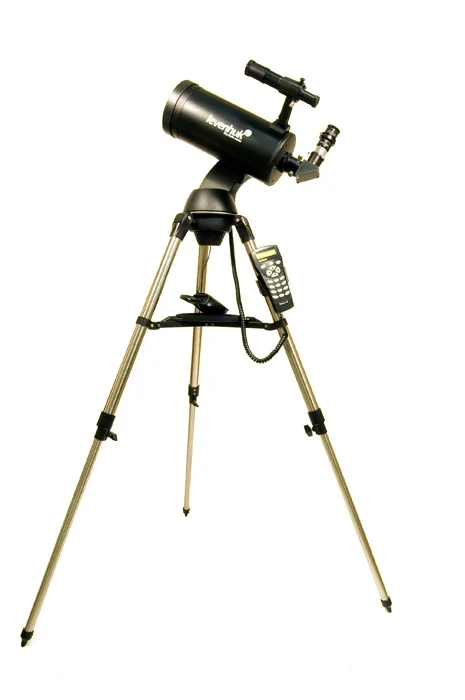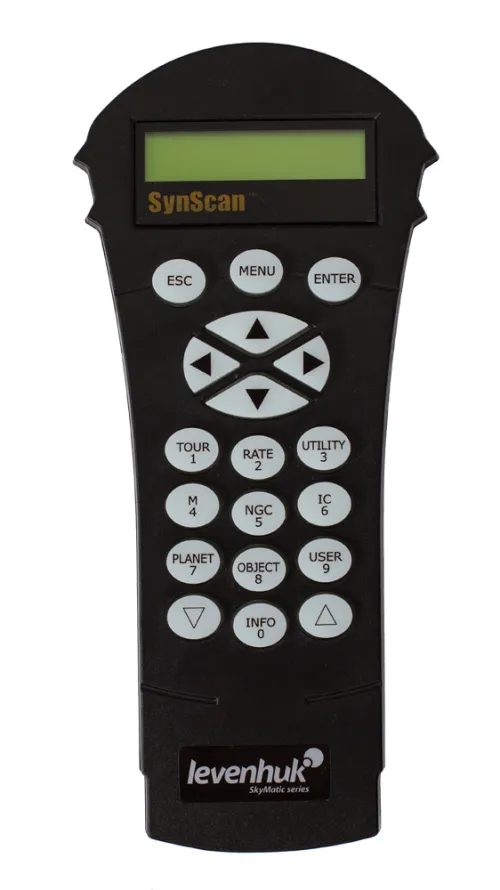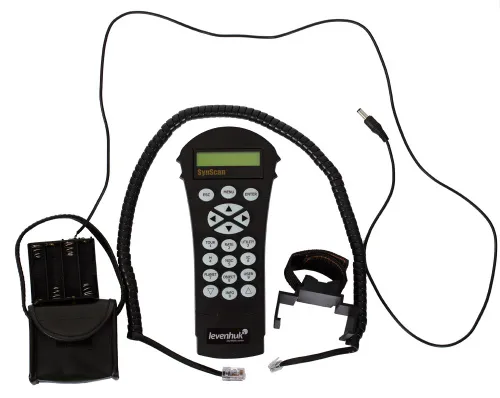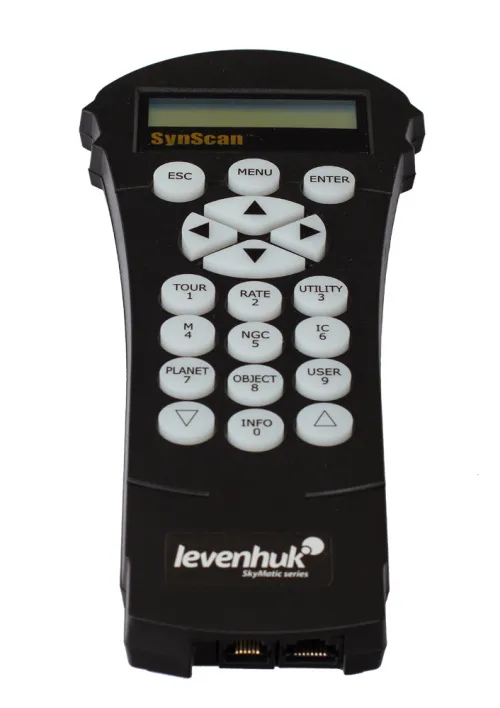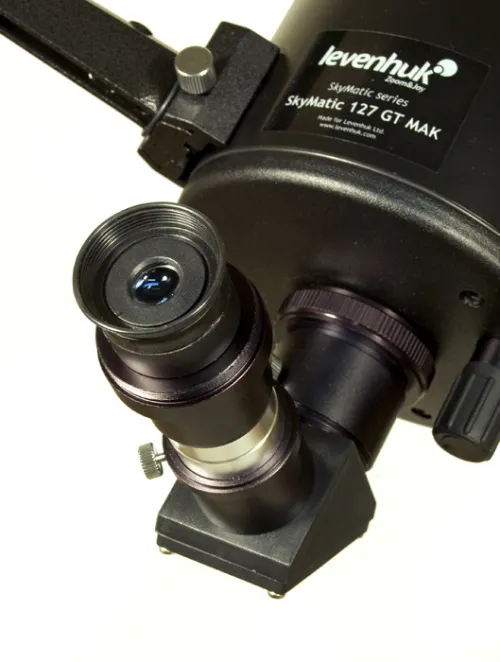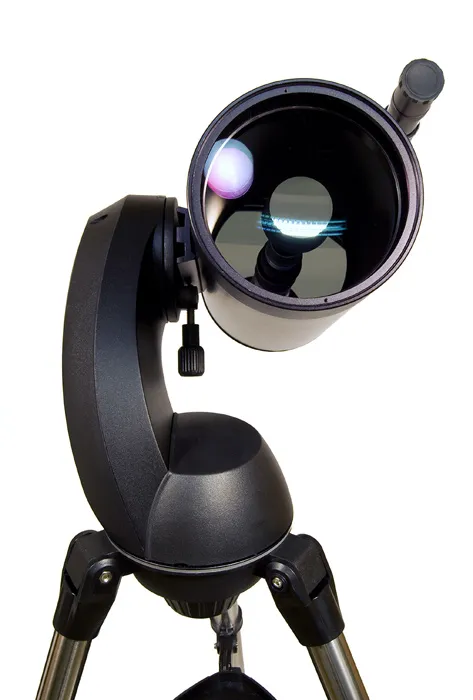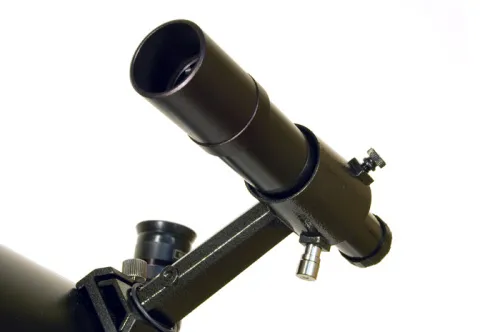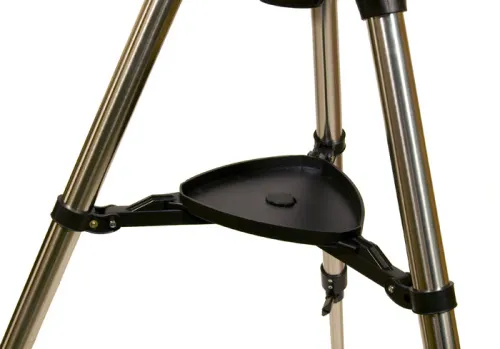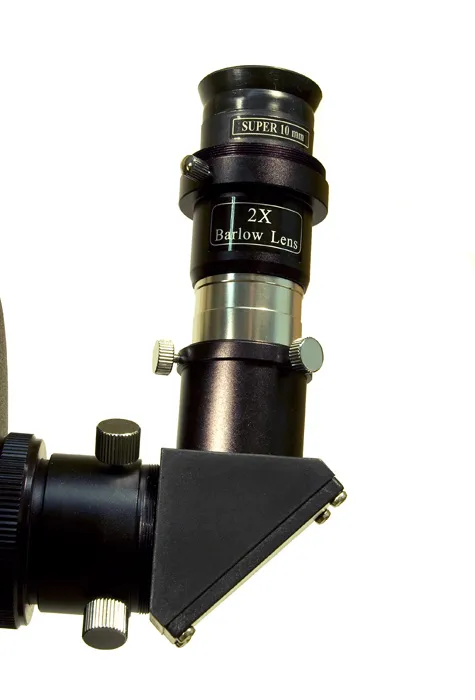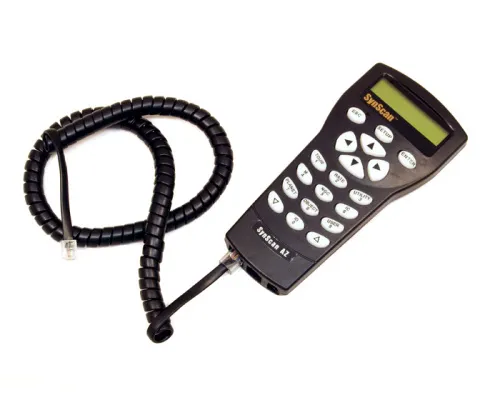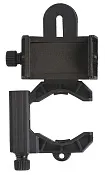Levenhuk SkyMatic 127 GT MAK Telescope
Maksutov-Cassegrain telescope. Aperture: 127mm. Focal length: 1500mm
| Product ID | 28296 |
| Brand | Levenhuk, Inc., USA |
| Warranty | lifetime |
| EAN | 5905555002132 |
| Package size (LxWxH) | 43x87x26 cm |
| Shipping Weight | 12 kg |
Levenhuk SkyMatic 127 GT MAK is a powerful, yet compact, Maksutov-Cassegrain telescope that yields detailed, high-quality views of the lunar surface, planetary disks, binary stars and compact nebulae. With a relatively large aperture and standard 1.25" eyepieces of this telescope, you will be able to observe nebulae and star clusters, while the GoTo mount with computerized drive systems will allow you to capture breathtaking images of Solar System planets and the Moon with ease. This practical instrument is a perfect choice for amateur stargazers, as it navigates to any celestial object automatically, yet it still is a powerful telescope that allows experienced stargazers to try their hand at astrophotography.
The azimuth GoTo mount with a SynScan AZ hand controller is extremely easy to use. Navigating to the most interesting celestial objects does not require any experience or knowledge, as the telescope will do everything by itself. The database of SynScan AZ includes over 42,000 objects, so you will never run out of things to observe. To make things even easier, the mount may be connected to a PC and controlled by any planetarium software.
Focusing the view is achieved by adjusting the primary mirror with a precise focus knob.
The kit includes:
- Levenhuk SkyMatic 127 GT MAK Telescope
- Eyepieces: 10mm and 25mm
- Diagonal prism
- 2x Barlow lens with a camera adapter
- Lunar filter
- Optical finder scope
- GoTo mount with the SynScan AZ system
- Tripod with an accessory tray
- Hand controller
- Battery compartment
- Set of connecting cables
- Tools for assembly
- Compass
- User manual and lifetime warranty
Levenhuk SkyMatic series includes reflectors and Maksutov-Cassegrain telescopes with GoTo. The computerized drive systems on both axes of the mount and intuitive controls of SynScan AZ significantly reduce the time it takes to find the hidden jewels of the celestial sphere, allowing you to observe the most interesting objects without having to spend precious time on checking astronomical charts. Levenhuk SkyMatic telescopes with GoTo mounts are smart telescopes that find stars themselves. SkyMatic GoTo mounts are compatible with an external 12V battery pack.
| Product ID | 28296 |
| Brand | Levenhuk, Inc., USA |
| Warranty | lifetime |
| EAN | 5905555002132 |
| Package size (LxWxH) | 43x87x26 cm |
| Shipping Weight | 12 kg |
| Optical design | catadioptric |
| Optical scheme | Maksutov-Cassegrain |
| Optics material | optical glass |
| Optics coating | standard |
| Primary mirror diameter (aperture), mm | 127 |
| Focal length, mm | 1500 |
| Highest practical power, x | 254 |
| Aperture ratio | f/11.8 |
| Resolution threshold, arcseconds | 1.1 |
| Limiting stellar magnitude | 12.5 |
| Eyepieces | SL 10mm (150x), SL 25mm (60x) |
| Eyepiece barrel diameter, in | 1.25 |
| Barlow lens | 2x, with a camera adapter |
| Finderscope | optical, 6x30 |
| Focuser | 1.25", rack & pinion |
| Tripod | steel |
| Tripod height (adjustable), mm | 630–1150 |
| Accessory tray | ✓ |
| Telescope control | autoguide |
| Mount | alt-azimuth |
| Drive | DC servo drives |
| Tracking rate | Lunar, Solar, sidereal |
| Positioning accuracy | up to 10 |
| Tracking mode | along two axes |
| System requirements | OS Windows 95/98/2000/XP/Vista/7/8/10; connecting a USB adapter to a computer via serial port (RS-232) |
| Guiding system alignment | one bright star, two stars |
| Autoguider | ✓ |
| Hand controller | SynScan AZ operating and autoguiding system |
| Power supply | 11–15V, 1A DC |
| User level | experienced users |
| Assembly and installation difficulty level | easy |
| Observed object | deep-sky objects, planets of the Solar System |
and downloads
Convenient diagrams that describe how to install additional accessories on refractors and catadioptric telescopes
All about Levenhuk SkyMatic 127 GT MAK
Find out how to assemble a telescope on an example of the Levenhuk Skyline 90x900 EQ telescope
This short guide will help you avoid typical mistakes and learn more about telescope and mounting types
The basics of astronomical observations for beginners
In this article we have gathered answers to some of the most frequently asked questions about telescopes
The most interesting celestial objects you can observe with Levenhuk telescopes
How telescopes work?
You can actually perform observations from your balcony!
All about telescope sizes, types, magnification, and mounts
Learn how to set up and use the telescope properly
Astronomy in light-polluted skies. Find out what you can observe in the city
Read an interesting comprehensive article on telescopes for little astronomers
The pictures are made with Levenhuk telescopes
Celestial objects you can observe with telescopes of different apertures
Colored and vivid images of galaxies, planets and star clusters entrance everyone who is fascinated by boundless space
Find an interesting review on the history of the changes to a refracting telescope
To make the process of choosing a telescope easier, we will tell you about the characteristics of the most popular types of telescopes today
Learn everything you need to know about refractor telescopes to make the right choice
Are you interested in the telescope with Go To function? The Go TO function will work for celestial objects.
The Levenhuk Skymatic 127 GT MAK telescope is very powerful model so you be able to observe objects at great detail.
1. Levenhuk SkyMatic 127 GT MAK is not compatible with MacBook Air.
2. We don't recommend using Bresser Barlow lens SA-5x. It will cause significant deterioration in the image quality. To get more powerful magnification, it's better to use a short focal length eyepiece.
3. There is not enough voltage, you need 12V. You can also buy an AC adapter.
4. You must save the settings before unplugging the instrument. Please refer to the user manual where this procedure is thoroughly described.
5. For deep-sky observations wide angle eyepieces are the best. Please also check this article - https://www.levenhuk.com/blog/knowledge-base-telescopes/a-short-guide-to-choosing-eyepieces/
With the help of this telescope you will be able to observe: * Binary stars from 1"" and more, faint stars up to 13 stellar magnitude; * Details of the Lunar mountains and craters with the size of 2-2.5 miles; * With a blue filter you can try to distinguish the spots in the clouds on Venus; * Numerous details on Mars during the oppositions; * Details in the belts of Jupiter; * Cloud bands of Saturn; * A lot of faint asteroids and comets; * Hundreds of star clusters, nebulae and galaxies; * Traces of spiral structure of the brightest galaxies ( M33 , M51).
In order to get the highest practical power, I'd recommend to consider buying a 6-6.5 mm eyepiece, for example Levenhuk Ra LER 6mm, 1.25" Eyepiece (https://eu.levenhuk.com/catalogue/accessories/telescope-accessories/telescope-eyepieces/levenhuk-ra-ler-6mm-1-25-eyepiece/ ).
Is there any additional information you might need? Looking forward to your reply.
To get this telescope to its highest practical power you need a 6-6.5 mm eyepiece, for example Levenhuk Ra LER 6mm, 1.25" Eyepiece (https://eu.levenhuk.com/catalogue/accessories/telescope-accessories/telescope-eyepieces/levenhuk-ra-ler-6mm-1-25-eyepiece/ .
It is better to buy an eyepiece not Barlow lens as the image will be more detailed.
Is there any additional information you might need?
Looking forward to your reply.
You can observe:
* Binary stars from 1"" and more, faint stars up to 13 stellar magnitude;
* Details of the Lunar mountains and craters with the size of 2-2.5 miles;
* With a blue filter you can try to distinguish the spots in the clouds on Venus;
* Numerous details on Mars during the oppositions;
* Details in the belts of Jupiter;
* Cloud bands of Saturn;
* A lot of faint asteroids and comets;
* Hundreds of star clusters, nebulae and galaxies;
* Traces of spiral structure of the brightest galaxies ( M33 , M51);
*A large number of NGC catalogue objects."
In order to get the highest practical power, I'd recommend to consider buying a 6 mm eyepiece, for example Levenhuk Ra LER 6mm, 1.25" Eyepiece (https://eu.levenhuk.com/catalogue/accessories/telescope-accessories/telescope-eyepieces/levenhuk-ra-ler-6mm-1-25-eyepiece/
Is there any additional information you might need?
Looking forward to your reply.
Telescopes with such optical design are easy to take care of (the tube is closed, which prevents the pollution of inner optical components and reduces air flow formations inside the telescope).
* Binary stars from 1" and more, faint stars up to 13 stellar magnitude;
* Details of the Lunar mountains and craters with the size of 2-2.5 miles;
* With a blue filter you can try to distinguish the spots in the clouds on Venus;
* Numerous details on Mars during the oppositions;
* Details in the belts of Jupiter;
* Cloud bands of Saturn;
* A lot of faint asteroids and comets;
* Hundreds of star clusters, nebulae and galaxies;
* Traces of spiral structure of the brightest galaxies ( M33 , M51);
* A large number of NGC catalogue objects.

